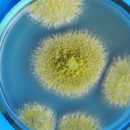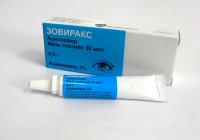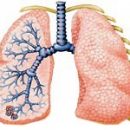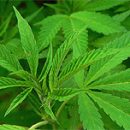What is Tularemia? What are the symptoms of Tularemia? How to diagnose, treatment and prophylaxis of Tularemia? Answers to these questions you will find in the article.
Content
Tulara'yia - Acute Infection with Natural
Focular, leaking with intoxication, fever, development
severe bubonic type lymphadenitis and lesions of various organs.
Pathways of Tularemia (Francisella
Tularensis) - Small polymorphic grams Negative microorganisms. IN
water and wet soil microbes retain viability at low
temperature - up to 9 months, at a temperature of 20-25°C - up to 2 months. IN
Frozen corpses of rodents killed from Tularemia, pathogen
Save up to 6 months. Microbes die during boiling and under the influence
various disinfectants.
The main sources of infection are rodents (voles, mice, water rats, hares, etc.).
Mechanisms and paths of human infection are diverse. Most
frequent - contact, implemented mainly in hunters when
Contact with infected animals, cutting carcass. Infection can
originateThis is a nutrition related) When eating products and
rodents infected. When processing grain crops, found,
The hay is possible aspiration path of infection. The infection can be transmitted
Blood axes (mites, fleas, blind, mosquitoes, mosquitoes, deer
flies).
Symptoms of Tularemia
Incubation period - from 1 to 14 days (more often than 3-7 days). 4 main clinical forms of Tularemia - bubonic, pulmonary,
Abdominal and generalized.
More often than others are the bubonic form of Tularemia, which is
up to 85% of all cases of disease. Clinical options for this form
are: bubonic, ulcer-bubonic, anginal and bubonic and
eye-bubonic.
For the tularemia bubonic form, a sharp beginning of the disease is characterized by
With chills, increasing body temperature for 1-2 days to 38-40c,
increasing intoxication that manifests the headache,
weakness, Malgia, sleep impaired. The face of patients hypereated,
Vessels Scler full, conjunctivations hyperemic. 2-3 days from
The first signs of regional lymphadenitis found -
Painness and swelling. Migrate, cervical and
Cubal lymph nodes. In the following days, affected lymph nodes
reach 3-5cm in diameter and more. Bubones are moderately painful, have
Clear contours, do not match the surrounding cloth, the skin is usually not
Changed. Exodes of tubes are different: almost half of the patients after 2-4
Ned comes their softening and the formation of a fistula with the allocation of thick
Some Pouquet, some patients have a complete
Lymph node resorption, others - sclerosis.
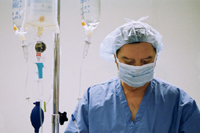
Often at the site of the deployment of the pathogen, the primary
Affect, which passes the stage of development from stain to Papula and
Sharp ulcers with simultaneous development of lymphadenitis.
This form meets with the transmissible path of infection and
called ulcer-bubonic.
If the pathogen enters the human body through
conjunctiva, then develops a spaso-bubonic form: follicular
Conjunctivitis with Localization of the Bubon in the near-key or submandibular
regions.
Alimentary or water pathway infection lead to
The emergence of anaino-bubonic form with primary affect in the region
The mucous membrane of one of the tonsils and submandibular (angular)
Localization Bubon.
The difficult course of Tularemia is observed in the defeat of the lungs. Developing pulmonary form
Tularemia manifests his breath, pain in
chest, dry cough (less often - with mucous-purulent or bleeding
Harrot).
With an alimentary and water path of infection can develop
Abdominal form of Tularemia. Limph nodes are involved in the process, severe general intoxication occurs, pain abdominal
syndrome, nausea, vomiting, stool delay. An increase is observed
parenchymal organs - liver, spleen.
The generalized form of Tularemia develops
immunocomplete individuals and proceeds by type of sepsis with defeat
various organs and systems.
Diagnosis, treatment and prevention of Tularemia
Diagnostic is an increase in antibody titer 4 times. Used
Also an intradermal allergic reaction with tularin, which
becomes positive by the end of the first week of the disease. In some cases
Apply a biological method based on infection of laboratory
animals by pathological material followed by microbial identification
agglutinating serum.
Treatment of Tularemia patients should be held
in hospital. Prescribe antibacterial drugs acting on
Tularemia causative agent, aminoglycosides (streptomycin, kanamycin,
Gentamicin and others.), Tetracycline, Levomycetin. Spend
Disinfection therapy.
It has great importance
Sanitary and educational work in the foci among professional groups
(hunters, agricultural workers). In natural foci
Vaccination of people live tularemia vaccine. Vicious
Immunity is preserved at least 5 years.

